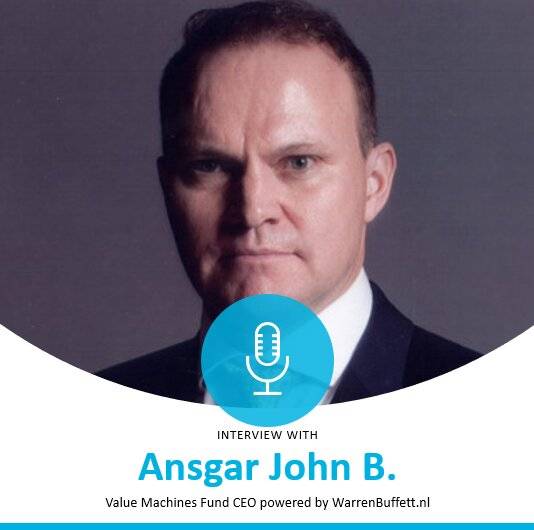As the retail sector navigates an era of unprecedented transformation, the question arises: Will offline retail disappear? The answer, according to Alfredo Gonzalez Canovas, Business Development Manager at 1stdibs.com, is a resounding no. Offline retail is not vanishing; it’s evolving. This shift reflects the growing demands of modern shoppers, who now expect a seamless blend of convenience, speed, and personalization across both physical and digital channels.
In this exclusive interview, we explore Alfredo’s insights on how offline stores are adapting to the rise of omnichannel strategies, the pivotal role of technology in creating personalized customer experiences, and the challenges retail must address to stay relevant. From the strengths and weaknesses of offline spaces compared to online giants, to the innovative trends shaping the future, Alfredo shares invaluable perspectives that shed light on the road ahead for the industry.
Join us as we delve into the evolving landscape of retail, uncovering what it takes to build successful stores and foster customer loyalty in a competitive, phygital world.
Retail Interview: Alfredo Gonzalez Canovas – The future of retail
We start by assessing the current context of the retail sector. Will offline disappear?
Offline retail is far from disappearing—it is evolving to meet the shifting demands of modern consumers. Flexibility and innovation are now essential for retailers to thrive in a landscape where convenience, speed, and personalized service are paramount. To remain competitive against the efficiency of online platforms, offline stores must embrace advanced technologies like artificial intelligence (AI) and augmented reality (AR).
Trends such as “Buy Online, Pickup In-Store” (BOPIS) and “Buy Online, Return In-Store” (BORIS) demonstrate how physical retail spaces can complement digital channels, bridging the gap between online and offline experiences. The most successful retailers are adopting omnichannel strategies that seamlessly integrate these environments. Brick-and-mortar stores now serve as more than just shopping destinations—they have transformed into showrooms, fulfillment hubs, and pickup points, ensuring smooth and connected customer journeys.
Offline retail is not disappearing—it is adapting
What are its defects and virtues in front of online retail?
Offline retail excels in offering human connection, immediacy, and sensory experiences, making it particularly valuable in situations where personal interaction, trust, or hands-on evaluation are essential. However, it faces challenges in areas such as convenience, pricing, and product availability, often falling short when compared to the unmatched efficiency and scale of online platforms.
Consumers demand personalized recommendations, offers, and experiences tailored to their preferences
What is the biggest problem or weakness that retail has to face?
The biggest challenge retail faces is adapting to evolving consumer habits. Shoppers now expect a seamless blend of online and offline options, such as “Buy Online, Pickup In-Store” (BOPIS), and retailers that fail to offer integrated omnichannel experiences risk losing customers to more adaptable competitors. Additionally, consumers demand personalized recommendations, offers, and experiences tailored to their preferences. Traditional retail often struggles to match the level of AI-driven personalization available online, leaving customers feeling disconnected and less engaged, which ultimately impacts loyalty and sale.
AI is setting the pace for innovation in retail
In the current context, what role does technology play in retail?
Technology plays a crucial role in engaging customers by enhancing personalization, streamlining omnichannel experiences, and creating interactive environments. Through data analytics and artificial intelligence (AI), retailers can offer highly personalized shopping experiences. By analyzing customer behavior and preferences, technology helps recommend products, tailor promotions, and design individualized marketing campaigns. For instance, e-commerce platforms often use recommendation engines similar to Netflix, suggesting items based on previous purchases or browsing history.
The adoption of emerging technologies is no longer optional—it is critical to staying competitive.
Omnichannel shopping is another way technology bridges the gap between online and offline retail. Integrated systems enable customers to shop seamlessly across platforms, whether they are browsing online, picking up in-store, or using a mobile app. Popular services like “Buy Online, Pick Up In-Store” (BOPIS) and augmented reality (AR) applications allow customers to explore products virtually before making a purchase, blending convenience with innovation.
Interactive and immersive experiences further engage customers by bringing products to life. Tools like AR and virtual reality (VR) enable shoppers to “try on” clothing, view furniture in their homes, or take virtual tours of stores. These technologies provide a more engaging and hands-on shopping experience, enhancing customer satisfaction and confidence in their purchases.
AI is transforming retail through hyper-personalization, operational efficiency, and enhanced customer interactions
Building brand loyalty is another area where technology excels. Loyalty programs powered by apps or blockchain allow customers to easily earn and redeem rewards, while gamification—through challenges or point systems—keeps users actively engaged. These efforts help foster long-term relationships with customers, ensuring repeat business.
Among current technologies, AI is leading the way in innovation, transforming retail through hyper-personalization, operational efficiency, and enhanced customer interactions. AI can analyze vast amounts of customer data to deliver curated experiences, as seen in Sephora’s “Color Match” feature, which recommends beauty products tailored to individual preferences. Additionally, AI-driven demand forecasting and inventory management enable retailers like Zara to align stock levels with trends and reduce waste through precise predictions. Visual search, another application of AI, simplifies the shopping journey by allowing customers to find products using images rather than text, as exemplified by Pinterest’s visual search tool.
With these advancements, technology not only meets but exceeds customer expectations, positioning retailers to thrive in an increasingly competitive landscape.
What does it take for a store to work? Is there a magic recipe?
While there’s no single magic recipe for a store’s success, certain ingredients, when combined effectively, can create a winning formula. Success lies in adapting these elements to the unique needs of the target audience, the industry, and the current market context.
A deep understanding of the target customer is essential. Successful stores cater to the specific needs, preferences, and lifestyles of their audience. Knowing your customers allows you to curate the right products, design engaging experiences, and craft tailored messaging. For instance, Lululemon targets active, wellness-focused individuals with premium athletic wear and community yoga sessions. This understanding is achieved through data analytics, customer surveys, and feedback.
Knowing your customers allows you to curate the right products, design engaging experiences, and craft tailored messaging
A unique value proposition (UVP) is another key component. A UVP answers the question, “Why should customers shop here instead of elsewhere?” It could be rooted in price, quality, service, or experience. For example, Dollar Tree thrives by offering unbeatable low prices, while luxury retailers like Tiffany & Co. emphasize exclusivity and craftsmanship.
The right location, whether physical or digital, is critical to accessibility. For physical stores, this means selecting high-traffic areas like malls or busy streets. For digital platforms, it involves investing in search engine optimization (SEO), social media presence, and user-friendly website design.
Exceptional customer experience is a cornerstone of retail success. Memorable experiences foster loyalty and turn customers into advocates. Apple Stores, for example, excel by offering hands-on product interaction and knowledgeable staff, creating a tech-savvy, customer-first environment.
Adaptability and innovation are crucial in rapidly changing markets. Retailers that embrace new technologies, respond to trends, and anticipate future needs thrive. Nike’s “Nike Live” concept stores, which use customer data to curate local product offerings and services, are a prime example of innovation in action.
Exceptional customer experience is a cornerstone of retail success
A strong brand identity helps stores stand out in a crowded marketplace. Customers gravitate toward brands they trust and feel emotionally connected to. Patagonia, for example, is known for its sustainability commitments, appealing to eco-conscious shoppers who align with its values.
Quality products and services are the foundation of any successful store. Selling something people want or need—and ensuring consistent quality—is non-negotiable. This requires robust quality control, supplier relationships, and staying ahead of trends.
Engaging visual merchandising is another critical factor. A visually appealing layout or website captures attention and guides customers through their buying journey. IKEA’s showroom-style layouts encourage exploration, while Zara’s minimalist displays showcase seasonal trends effectively.
Effective marketing and promotion ensure that even the best store is visible to potential customers. Social media, loyalty programs, influencer collaborations, and localized promotions create awareness and drive traffic.
Finally, community building and engagement help foster long-term loyalty and repeat business. Local bookstores hosting readings or businesses partnering with local artists are examples of how connecting with the community can create lasting bonds and a dedicated customer base.
How is customer loyalty achieved? How do you engage your customers?
The future of retail lies at the intersection of innovation, technology, and human connection
How do you see the future of retail?
The future of retail lies at the intersection of innovation, technology, and human connection. As the industry evolves, retailers will need to seamlessly blend physical, digital, and experiential elements to meet the demands of increasingly tech-savvy and sustainability-conscious customers. This transformative phase will be defined by the integration of cutting-edge technology, a focus on sustainability, and a deep understanding of shifting consumer behaviors.
Success will hinge on personalization, sustainability, and innovation
A prominent trend is the rise of phygital retail, where physical and digital elements converge to create “smart stores” that are both futuristic and human-centered. Imagine environments where smart shelves display dynamic pricing and personalized ads, or digital kiosks enable customers to browse extended product catalogs. Looking ahead, advancements like holographic assistants and digital twins of products will further enhance the shopping experience, making it immersive and interactive.
Ultimately, the future of retail is not about choosing between physical and digital—it’s about blending the best of both worlds. Success will hinge on personalization, sustainability, and innovation, while maintaining engaging, human-centered experiences that resonate with the evolving expectations of customers.







